|
Printables |
PowerPoints |
Online exercises |
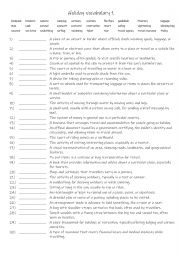
|
A2+-B1 Holiday vocab 1
Learning holiday vocabulary is essential for effective communication, trip planning, and enjoyment. It helps travellers navigate logistics, understand important terms like "passport," "reservation," and "itinerary," and engage with local culture through words like "souvenir" and "currency." Familiarity with terms related to safety ("travel insuranc...
Level: intermediate
Age: 9-100
Type:
Downloads: 104
|
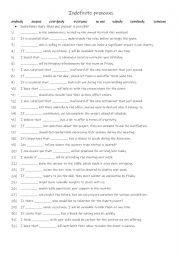
|
A2+-B1 Indefinite pronouns
Learning indefinite pronouns is important for clear communication, as they refer to nonspecific people or things, enhancing understanding in both spoken and written language without naming specific individuals. They allow students to express inclusivity, as in "Everybody is invited," and avoid repetition, keeping sentences concise and fluid. Additi...
Level: elementary
Age: 8-100
Type:
Downloads: 132
|
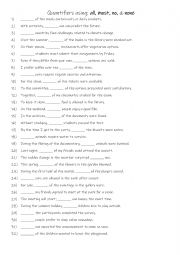
|
A2+-B1 Linking words for amounts: neither, nor, both & either
First students familiarise themselves with the 4 words and their uses. Then they read the sentences to work out which linker is needed to complete the gap-fill.Each linker is used 7 times. Answers on page 2.
Level: intermediate
Age: 9-100
Type:
Downloads: 120
|
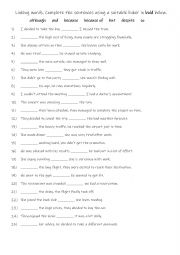
|
A2+-B1 Linking words. Complete the sentences using a suitable linker in bold below.
Linking words. Students complete the sentences using a suitable linker in bold below.
although and because because of but despite so. Answers on page 2.
Level: intermediate
Age: 10-100
Type: worksheet
Downloads: 124
|
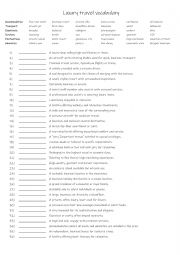
|
A2+-B1 Luxury travel vocabulary
Students familiarise themselves with the 30 words and their meanings, then they read the definitions to work out and write in the space provided which one is being described. Answers on page 2.
Level: intermediate
Age: 9-100
Type:
Downloads: 130
|
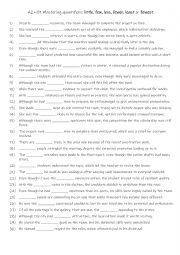
|
A2+-B1 Mastering Quantifiers Little, Few, Less, Fewer, Least, and Fewest
Learning to use little, few, less, fewer, least, and fewest correctly is essential for precise and accurate communication, especially when describing quantities. Mastering these terms allows for nuanced expression, helping to convey exact amounts or degrees more effectively. Understanding which to use with countable nouns ("fewer apples") versus un...
Level: elementary
Age: 9-100
Type:
Downloads: 105
|

|
A2+-B1 Past participle clauses 4
Students complete the gap-fill with the correct word. Answers on page 2.
Level: elementary
Age: 10-100
Type:
Downloads: 118
|
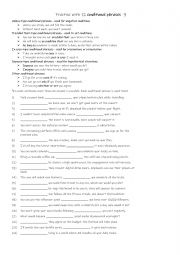
|
A2+-B1 Practise with 12 conditional phrases 3
First, students need to familiarise themselves with the 12 conditional phrases and their meanings and use. Then they read the sentences to see which one is suitable to complete the gap-fill. Each conditional phrase is used 2 times! Answers on page 2.
Level: elementary
Age: 10-100
Type:
Downloads: 101
|

|
A2+-B1 Practise with 12 conditional phrases 4
First, students need to familiarise themselves with the 12 conditional phrases and their meanings and use. Then they read the sentences to see which one is suitable to complete the gap-fill. Each conditional phrase is used 2 times! Answers on page 2.
Level: elementary
Age: 9-100
Type:
Downloads: 131
|
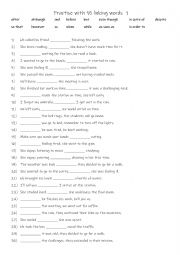
|
A2+-B1 Practise with 15 linking words 1
Students should learn these linking words because they are essential for creating complex, logical sentences that convey relationships such as contrast (although, however), cause and effect (so that, in order to), and time (before, as soon as). Mastering them enhances writing and speaking by making language more sophisticated and engaging, as stude...
Level: intermediate
Age: 9-100
Type:
Downloads: 102
|
|
|
|
|












